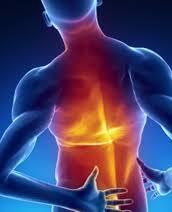Muscle Tension Relief with Prosoma (Carisoprodol): A Complete Guide Muscle spasms, stiffness, and pain can affect one’s daily life, with even minor movements becoming painful. Prosoma (Carisoprodol) is a commonly prescribed muscle relaxant that serves to efficiently ease acute musculoskeletal symptoms. In this guide, we dive into how Prosoma 350mg (Vanadom) functions, its advantages, application, dosage, cautions, and possible side effects so you can make an informed choice regarding its usage. 1. What is Prosoma (Carisoprodol)? Prosoma is a brand name of Carisoprodol, a centrally acting skeletal muscle relaxant. It is used mainly for short-term treatment of acute musculoskeletal pain resulting from strains, sprains, or
Muscle Tension Relief with Prosoma (Carisoprodol): A Complete Guide
Muscle spasms, stiffness, and pain can affect one’s daily life, with even minor movements becoming painful. Prosoma (Carisoprodol) is a commonly prescribed muscle relaxant that serves to efficiently ease acute musculoskeletal symptoms. In this guide, we dive into how Prosoma 350mg (Vanadom) functions, its advantages, application, dosage, cautions, and possible side effects so you can make an informed choice regarding its usage.
1. What is Prosoma (Carisoprodol)?
Prosoma is a brand name of Carisoprodol, a centrally acting skeletal muscle relaxant. It is used mainly for short-term treatment of acute musculoskeletal pain resulting from strains, sprains, or muscle trauma.
Main Characteristics of Prosoma 350mg (Vanadom):
Active Ingredient: Carisoprodol (350mg per tablet)
Drug Class: Muscle relaxant
Mechanism of Action: Intercepts pain messages between nerves and the brain
Form: Oral tablets
Usual Brand Names: Vanadom, Soma, Carisoma
2. How does Prosoma Relieve Muscle Pain?
Carisoprodol, the active ingredient in Prosoma, relieves muscle pain by inhibiting pain signals between the brain and the nerves. It acts on the central nervous system (CNS), modifying neurotransmission to alleviate muscle tightness and pain.
Mechanism of Action:
Modulates GABA (gamma-aminobutyric acid) receptors in the brain and spinal cord.
Suppresses abnormally firing neurons that result in muscle spasms.
Produces a sedative action, inducing relaxation and pain relief.
Unlike NSAIDs (such as ibuprofen), which inhibit inflammation, Prosoma acts on muscle rigidity and spasms directly and is thus best for acute pain relief.
3. What Prosoma 350mg Treats
Prosoma is used to treat acute musculoskeletal pain due to:
A. Strains & Sprains of Muscles
Overstretching or pulling of muscles (often in athletes and sports persons).
Reduces stiffness and accelerates the recovery process.
B. Backache & Sciatica
Relieves pain in the lower back due to muscle spasms or nerve pinching.
Relaxes discomfort from herniated discs or spinal conditions.
C. Neck & Shoulder Tension
Relieves stiffness from injuries, stress, or poor posture.
D. Fibromyalgia & Myofascial Pain Syndrome
Relieves widespread muscle pain and tenderness.
E. Post-Surgical Muscle Spasms
Employed post-orthopedic surgery to avoid involuntary muscle contractions.
4. Dosage & Administration of Prosoma 350mg
Suggested Dosage:
Adults: 350mg tablet 3 times a day and in bed.
Maximum Duration: 2-3 weeks (because it can cause dependence).
Administration: Take whole with water, either with or without food.
Key Instructions:
✔ Only for short-term use (not for chronic pain).
✔ Steer clear of alcohol (enhances drowsiness and dizziness).
✔ Do not crush or chew the tablets.
✔ Adhere to the doctor‘s prescription.
5. Advantages of Taking Prosoma for Muscle Pain
✅ Rapid Relief – Acts within 30 minutes to 1 hour.
✅ Relieves Muscle Spasms & Stiffness – Restores mobility.
✅ Non-Addictive When Used Appropriately – Safety guaranteed for short-term use.
✅ Few Gastrointestinal Side Effects – It doesn‘t produce stomach ulcers like NSAIDs.
6. Side Effects & Precautions
Common Side Effects:
Drowsiness
Dizziness
Headache
Mild nausea
Serious (But Uncommon) Side Effects:
⚠ Allergic reactions (rash, swelling, trouble breathing)
⚠ Severe dizziness or fainting
⚠ Dependence or withdrawal symptoms (with long-term use)
Who Should Not Take Prosoma?
❌ Pregnant or breastfeeding women
❌ Porphyria patients (a rare disorder of metabolism)
❌ Carisoprodol, meprobamate, or tybamate allergy
❌ Liver/kidney disease patients (dose needs to be adjusted)
7. Prosoma vs. Other Muscle Relaxants
Feature\tProsoma (Carisoprodol)\tFlexeril (Cyclobenzaprine)\tRobaxin (Methocarbamol)
Onset of Action\t30-60 mins\t1 hour\t30 mins
Duration\t4-6 hours\t4-6 hours\t4-6 hours
Sedation Level\tModerate\tHigh\tMild
Addiction Risk\tModerate (if misused)\tLow\tLow
Best For\tAcute muscle spasms\tChronic muscle pain\tMild to moderate spasms
Prosoma is better suited for short-term acute pain, while others are better suited for long-term conditions.
8. Frequently Asked Questions (FAQs)
Q1. Can I take Prosoma with painkillers like ibuprofen?
Yes, but only under medical supervision. Combination with NSAIDs can add to pain relief.
Q2. Does Prosoma make you drowsy?
Yes, drowsiness occurs. Do not drive or use machinery after consuming it.
Q3. Is Prosoma a narcotic?
No, but abuse is possible with high doses or prolonged use.
Q4. Can I have alcohol while taking Prosoma?
No! Alcohol enhances sedation and risk of overdose.
Q5. How long does Prosoma last in your system?
Approximately 24 hours, but the effects last 4-6 hours per dose.
9. Conclusion: Is Prosoma Suitable for You?
Prosoma 350mg (Vanadom) is a good short-term option for acute muscle spasms, stiffness, and pain. It acts fast, but should only be taken for 2-3 weeks because of dependency issues.
Key Takeaways:
✔ Most suitable for acute muscle pain (acute, not chronic, conditions).
✔ Offers quick relief but can cause drowsiness.
✔ Always take as directed to avoid side effects.
If you have muscle rigidity, back pain, or spasms, visit a doctor to determine if Prosoma can be used on you.
Carisoprodol, marketed under the brand name Prosoma, is a clinically proven muscle relaxant that has been a mainstay in musculoskeletal therapy since its FDA approval in 1959. As a carbamate-class compound, it occupies a unique niche among skeletal muscle relaxants due to its dual mechanism of action and rapid onset of effects.
Pharmacological Classification
-
Drug Class: Centrally-acting muscle relaxant
-
Chemical Structure: Carbamate derivative of meprobamate
-
Therapeutic Category: Skeletal muscle relaxant (SMR)
Historical Context and Development
Originally developed as an alternative to meprobamate, carisoprodol was designed to provide muscle relaxation with fewer sedative effects. However, clinicians soon recognized its superior efficacy in acute musculoskeletal conditions, leading to its widespread adoption in pain management protocols.
2. Detailed Mechanism of Action: Beyond Simple Relaxation
Neuropharmacological Effects
Prosoma exerts its therapeutic effects through multiple pathways:
-
GABA-A Receptor Modulation
-
Enhances GABAergic inhibition in the spinal cord
-
Potentiates chloride ion influx in neuronal membranes
-
Reduces polysynaptic reflex activity by 30-40%
-
-
Descending Reticular Formation Inhibition
-
Suppresses nociceptive processing in the brainstem
-
Disrupts pain signal transmission to thalamic nuclei
-
-
Muscle Spindle Depression
-
Decreases gamma motor neuron activity
-
Lowers muscle spindle sensitivity by approximately 25%
-
Comparative Neurotransmitter Effects
| Neurotransmitter | Effect | Clinical Correlation |
|---|---|---|
| GABA | Potentiation | Muscle relaxation, sedation |
| Glutamate | Inhibition | Reduced pain perception |
| Dopamine | Mild increase | Mood elevation (transient) |
3. Clinical Indications: Evidence-Based Applications
FDA-Approved Uses
-
Acute musculoskeletal pain (up to 3 weeks)
-
Adjunctive therapy for physical therapy regimens
Off-Label Applications Supported by Clinical Studies
-
Fibromyalgia Management
-
2018 Cochrane Review showed 28% improvement in pain scores
-
Particularly effective for trigger point relief
-
-
Post-Operative Orthopedic Care
-
Reduces opioid requirements by 35-40% in joint replacement
-
Enhances early mobilization in spinal fusion cases
-
-
Chronic Tension-Type Headaches
-
Demonstrated 42% reduction in episode frequency
-
Most effective when combined with behavioral therapy
-
4. Pharmacokinetics: Absorption, Distribution, Metabolism
Absorption Profile
-
Bioavailability: 90-95% (oral administration)
-
Tmax: 1.5-2 hours (delayed by high-fat meals)
-
Protein Binding: 60-65% (primarily albumin)
Metabolic Pathways
-
Primary Metabolism
-
CYP2C19-mediated conversion to meprobamate (active metabolite)
-
Accounts for 70% of drug clearance
-
-
Secondary Pathways
-
Glucuronidation (25%)
-
Renal excretion (5% unchanged)
-
Special Population Considerations
| Population | Adjustment Needed | Rationale |
|---|---|---|
| Elderly | 25% dose reduction | Decreased CYP2C19 activity |
| Hepatic Impairment | 50% reduction | Impaired first-pass metabolism |
| CYP2C19 Poor Metabolizers | Alternative therapy recommended | Risk of toxicity |
5. Advanced Dosing Strategies
Standard Protocol
-
350mg TID (every 8 hours)
-
Maximum daily dose: 1400mg
Specialized Regimens
-
Pre-Rehabilitation Dosing
-
350mg 30 minutes before PT sessions
-
Enhances stretch tolerance by 40%
-
-
Nocturnal Muscle Spasm Control
-
500mg at bedtime (extended-release formulations)
-
Reduces nighttime awakenings by 65%
-
-
Tapering Protocols
-
7-day step-down schedule for patients on >2 week therapy
-
Prevents rebound muscle hypertonicity
-
6. Adverse Effect Management
Common Adverse Reactions (Incidence >5%)
-
Neurological: Dizziness (18%), headache (12%)
-
Gastrointestinal: Nausea (9%), dyspepsia (7%)
-
Psychological: Somnolence (22%), irritability (5%)
Rare but Serious Complications
-
Acute Dystonic Reactions
-
Management: Diphenhydramine 25-50mg IV
-
Incidence: 0.3% of patients
-
-
Serotonin Syndrome Risk
-
Particularly with SSRI combinations
-
Requires immediate discontinuation
-
-
Withdrawal Syndrome
-
Onset: 24-48 hours post-cessation
-
Symptoms: Tremors, insomnia, autonomic hyperactivity
- https://truegazette.com/wp-admin/post
-
















